
Janelle Patton was a 29-year-old Sydney woman who was murdered on Norfolk Island on 31 March 2002. The case made national headlines in Australia and New Zealand, as she was the first person to be murdered on Norfolk Island since 1893.
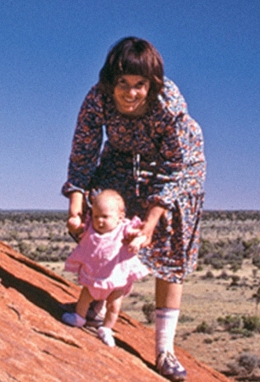
Azaria Chantel Loren Chamberlain was a nine-week-old Australian baby girl who was killed by a dingo on the night of the 17 August 1980 during a family camping trip to Uluru in the Northern Territory. Her body was never found. Her parents, Lindy and Michael Chamberlain, reported that she had been taken from their tent by a dingo. However, Lindy was tried for murder and spent more than three years in prison. Michael was also put in jail for some time. Lindy was released only after Azaria's jacket was found near a dingo lair and new inquests were opened. In 2012, 32 years after Azaria's death, the Chamberlains' version of events was officially supported by a coroner.

The Darwin Correctional Centre, an Australian minimum to maximum security prison for males and females, is approximately 30 kilometres (19 mi) by road from Darwin, Northern Territory, Australia. The centre is managed by Northern Territory Department of Correctional Services, of the Government of the Northern Territory. The centre detains sentenced and charged felons under Northern Territory and/or Commonwealth law.

The Claremont serial killings is the name given by the media to a case involving the disappearance of an Australian woman, aged 18, and the killings of two others, aged 23 and 27, in 1996–1997. After attending night spots in Claremont, a wealthy western suburb of Perth, Western Australia, all three women disappeared in similar circumstances leading police to suspect that an unidentified serial killer was the offender. The case was described as the state's biggest, longest running, and most expensive investigation.
The backpacker murders were a spate of serial killings that took place in New South Wales, Australia, between 1989 and 1993, committed by Ivan Milat. The bodies of seven missing young people aged 19 to 22 were discovered partially buried in the Belanglo State Forest, 15 kilometres (9.3 mi) south-west of the New South Wales town of Berrima. Five of the victims were foreign backpackers and two were Australians from Melbourne. Milat was convicted of the murders on 27 July 1996 and was sentenced to seven consecutive life sentences, as well as 18 years without parole. He died in prison on 27 October 2019, having never confessed to the murders for which he was convicted.
Joanne Rachael Lees is a British woman who was attacked and subjected to an attempted abduction while travelling in Australia with her partner Peter Falconio. Lees escaped her attacker, but Falconio was never found. The attacker was identified as Bradley John Murdoch, and in 2005 he was convicted of Falconio's murder. Lees was the chief crown witness in the murder trial, which was conducted in Darwin. She later wrote a book about her experiences, which was made into a television film.
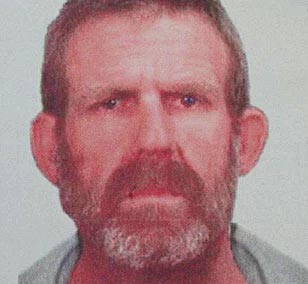
Bradley John Murdoch is an Australian criminal serving life imprisonment for the July 2001 murder of English backpacker Peter Falconio in Australia. He will be 74 when eligible for parole in 2032. Murdoch is being held in Darwin Correctional Centre in Darwin, Northern Territory. He has lodged two appeals against his conviction, both of which were unsuccessful. The High Court of Australia refused special leave to appeal on 21 June 2007. He is forbidden to talk to the press.
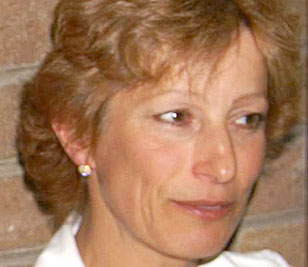
Maria Korp was a Portuguese-born Australian woman reported missing for four days and later found, barely alive, in the boot of her car on 13 February 2005. She spent a short time in a coma before emerging into a state of post-coma unresponsiveness. She became the centre of a controversy in Australia during 2005. Depending upon their viewpoint, people have characterised the controversy as being about euthanasia or about human rights and protecting people with disabilities.

Wolf Creek is a 2005 Australian horror film written, co-produced and directed by Greg McLean and starring John Jarratt, Nathan Phillips, Cassandra Magrath and Kestie Morassi. Its plot concerns three backpackers who find themselves taken captive and subsequently hunted by Mick Taylor, a sadistic, psychopathic, xenophobic serial killer, in the Australian outback. The film was ambiguously marketed as being "based on true events", while its plot bore elements reminiscent of the real-life murders of backpackers by Ivan Milat in the 1990s and Bradley Murdoch in 2001, both of which McLean used as inspiration for the screenplay.
The Forensic Science Service (FSS) was a government-owned company in the United Kingdom which provided forensic science services to the police forces and government agencies of England and Wales, as well as other countries.
Andrew Mark Mallard was a British-born Australian who was wrongfully convicted of murder in 1995 and sentenced to life imprisonment. Almost 12 years later, after an appeal to the High Court of Australia, his conviction was quashed and a retrial ordered. However, the charges against him were dropped and Mallard was released. At the time, the Director of Public Prosecutions stated that Mallard remained the prime suspect and that if further evidence became available he could still be prosecuted. He was released from prison in 2006 after his conviction was quashed by the High Court, and was paid $3.25 million compensation by the state government. The Western Australian Commission on Crime and Corruption investigated whether there was misconduct by any public officer associated with this case and made findings against two policemen and a senior prosecutor.

Joanne Lees: Murder in the Outback is a television film produced by Channel Ten and ITV Productions, which first aired in Australia on Channel Ten on 18 March 2007 and in the UK on ITV on Sunday 8 April, where it was titled Murder in the Outback. It is based on the real life disappearance of Peter Falconio.
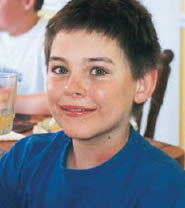
Daniel James Morcombe was an Australian boy who was abducted from the Sunshine Coast, Queensland on 7 December 2003 when he was 13 years old. Eight years later, Brett Peter Cowan, a former Sunshine Coast resident, was charged with Morcombe's murder. In the same month, DNA tests confirmed bones in the Glass House Mountains were Morcombe's. On 13 March 2014, Cowan was found guilty of the murder, and was sentenced to life imprisonment for the murder and indecently dealing with a child and interference with a corpse.
Celia Natasha "Tasha" Douty was a British-born Australian resort worker who was murdered on Brampton Island in Queensland, Australia. The crime remained unsolved until 2001, when Sydney motor industry finance Business Manager, Wayne Butler, was found guilty. It was the first murder in Australia to be solved using DNA profiling. The prosecution relied heavily on DNA evidence and it became a case study for the use of the technique in court.
Tina Watson was a 26-year-old American woman from Helena, Alabama, who died while scuba diving in Queensland, Australia, on 22 October 2003. Tina had been on her honeymoon with her new husband, fellow American Gabe Watson, who was initially charged by Queensland authorities with his wife's murder. Watson pleaded guilty to manslaughter and was sentenced to a term of imprisonment.
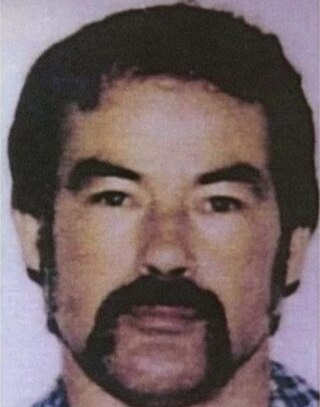
Ivan Robert Marko Milat, commonly referred to in media as the Backpacker Murderer, was an Australian serial killer who abducted, assaulted, robbed and murdered two men and five women in New South Wales between 1989 and 1992. His modus operandi was to approach backpackers along the Hume Highway under the guise of providing them transport to areas of southern New South Wales, then take his victims into the Belanglo State Forest where he would incapacitate and murder them. Milat is also suspected of having committed many other similar offences and murders around Australia.
The Lin family murders occurred in North Epping in the northwestern suburbs of Sydney, New South Wales, Australia, on 18 July 2009. The victims were newsagency proprietor Min Lin; his wife, Yun Lin; their sons, Henry and Terry; and Yun Lin's sister, Irene Lin. The family was bludgeoned to death. Min Lin's sister, Kathy, discovered the bodies. Jun "Brenda" Lin, 15, was the only surviving immediate family member after the incident; she was on a school trip in New Caledonia with Cheltenham Girls High School at the time.
The murders of Karlie Pearce-Stevenson and Khandalyce Pearce were initially treated as unrelated. The skeletal remains of Pearce-Stevenson were found in Belanglo State Forest, New South Wales, Australia in 2010. Her daughter Khandalyce Pearce's remains were found near Wynarka, South Australia in July 2015. The two cases were not linked until positive identification was confirmed by DNA testing in October 2015. The mother and daughter were last seen by family in 2008 in Alice Springs, Northern Territory and reported missing in 2009; however, the report was withdrawn. It was discovered Pearce-Stevenson's mobile phone was used for years following her death to send false "proof of life" messages to family and friends. The mother and child's identities were exploited by third parties to commit social security and other types of identity fraud.

Grace Emmie Rose Millane was a British tourist whose disappearance in Auckland, New Zealand, in December 2018 sparked international attention. A 26-year-old man, Jesse Shane Kempson, was charged with her murder on 8 December 2018, and her body was found in the Waitākere Ranges to the west of Auckland the following day. Kempson's name was suppressed by New Zealand courts, meaning it could not be published in New Zealand; however, some international media outlets chose to publish it contrary to the New Zealand court order.
Simone Monika Strobel was a 25-year-old German kindergarten teacher and backpacker whose body was found at a sportsground in Lismore, New South Wales, six days after being reported missing from the caravan park where she had been staying. An initial inquest in 2007 found insufficient evidence to lay charges over her death.












